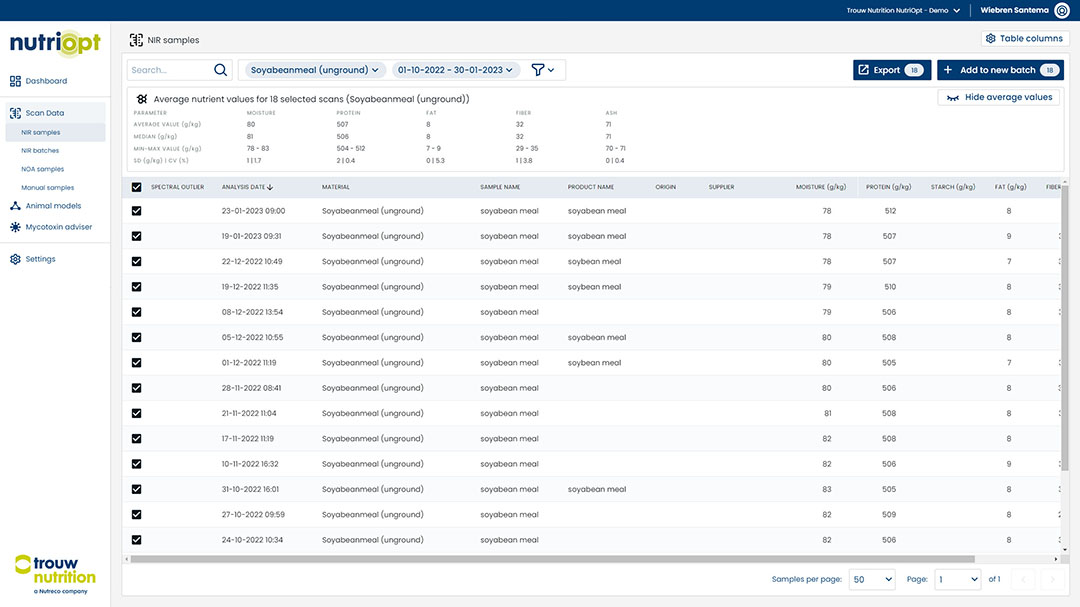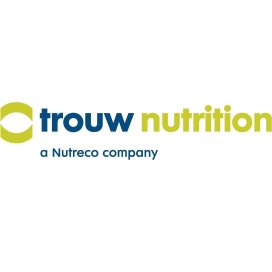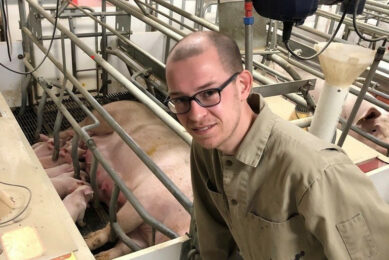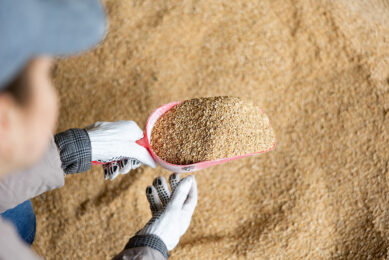Increased NIR uptake fuels precision feeding

Quality issues and high feed prices drive the uptake of NIR to measure quality and nutritional value of raw materials in a more precise manner. Having NIR data at hand, the ability to update matrix values is made easier and daily decisions are more informed.
Due to market and logistic disruptions and price spikes of common feed ingredients, feed mills need to be more flexible in using other (alternative) raw materials. This can come with variable nutritional values, marked by often a lower energy and a higher fibre content compared to more conventional (commonly used) feed ingredients. The use of near-infrared reflectance spectroscopy (NIR) helps feed mills to process many samples in an efficient and cost-effective way to get accurate nutritional values, which enables fast implementation of the results. The use of wet chemistry methods for analysing raw materials is still applied widely in practice and can work well for some feed mills. In practice, NIR and wet chemistry are therefore both advised for feed analysis, depending on the customer needs. Yet, when more samples need to be processed due to changed raw material use, speed and quality checks for example, the move from wet chemistry to NIR can be the way forward.
NIR potential on two levels
Trouw Nutrition has a lot of expertise and knowledge about NIR, mainly due to its MasterLab, a state-of-the-art laboratory with over 60 years of experience in feed analysis. “So when we talk about feed analysis and how we can improve on this, we see the potential on two levels”, explains Wiebren Santema, Product Market Manager at Trouw Nutrition. “Firstly, we see potential to grow the group of feed companies to make a start with using NIR. And interestingly, we find these type of feed mills also in mature markets such as Northwest Europe. Secondly, there is room for improvement for the ones that already use NIR. The improvement lies in connecting the NIR desktop devices to our Trouw Nutrition calibration lines and nutritional database. This means that feed mills do not have to manage their own calibration lines anymore and have access to the latest and most accurate values. This saves them time and money,” Santema addresses.
Overview in MyNutriOpt portal
NIR allows to analyse multiple samples of a shipment of soy to create average values. These averages can be discussed with suppliers when the protein content is lower than expected (and paid for) for example. The averages are also key to adjust matrix values to optimise feed formulations. “Having the data readily available and one place where you can access the information is therefore key”, Santema addresses. This sounds logical and easy to do in today’s digital world. Yet, 2 years ago, there was not a single program where all NIR data was gathered in an organised, clear, and user-friendly way. “Let alone that feed millers had the NIR data enriched with functionalities to make batches from different samples, upload them to feed formulation software, and integrate more services and tools (such as animal models)”, Santema explains.
This has spurred Trouw Nutrition to develop MyNutriOpt. This web-based portal has been developed in collaboration with, and with feedback from customers, and shows the nutritional values (based on the accurate and robust nutritional database of Trouw nutrition) of the samples that are scanned with desktop NIR devices at the feed mill. In addition, this portal connects a range of other services from Trouw Nutrition that are relevant for the user.
Learn more about how MyNutriOpt helps you manage animal nutrition in this video
More data, better matrix values
“Since the introduction of the portal, it has been implemented with our customers worldwide that use NIR. It also went through several improvement rounds to add new features, increase speed, connect other services within Trouw Nutrition to the portal (such as animal models and mycotoxin services), and step up all-round better functionality. For example, we have a dedicated team that manage our nutritional database according to the latest science around nutritional requirements and feed ingredient characteristics amongst others,” Santema explains.

“Since its introduction, we have learned that feed mills really appreciate the functionality of making batches and uploading the values to their feed formulation software. This allows them to update the values more often and be more precise and cost-effective in the formulation of animal diets. This confirms that there is a high need in the market to be more on top of the matrix values,” Santema explains.
A big benefit of MyNutriOpt is that everyone looks at the same data. The whole feed mill team (including procurement, quality control and nutritionists) can access results, review the feed sample analyses, and consider outlier information. Shared data allows efficient collaboration between different team members. And this is also important when new team members join the company. Nutritional information and equations should not only be in people’s head. The risk of losing that expertise is there when people leave the company or retire.
15 million samples and counting
It is clear that NIR gains ground, and the interest is growing. Every ten seconds on average, and every day of the year, one sample is analysed and added to the NIR Nutreco network, which now consists of more than 15 million samples already. “We constantly listen to our customers about what they need in terms of feed management and which data is important to fit the decision-making flow in a feed mill. We simply have room to improve on raw material management and nutrient evaluation. Our aim is to provide digital, yet easy to work, solutions such as MyNutriOpt to make this happen,” Santema concludes.
If you want more information about MyNutriOpt and our formulation and nutrition expertise, please get in touch.






